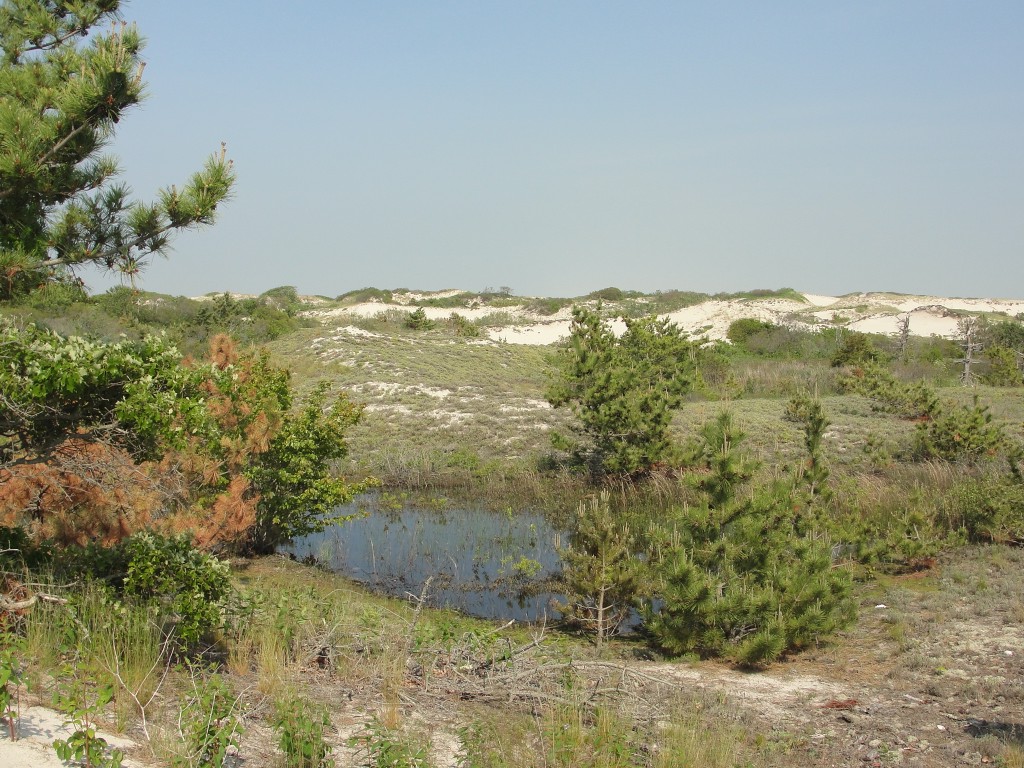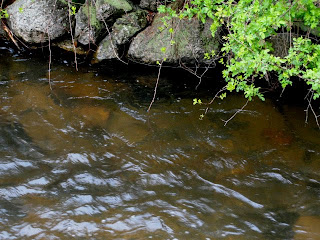What a crazy spring it has been! One day every pond and vernal pool is full of water and then it is dry…and then it is full of water again! Imagine being one of the little critters trying to survive out there.
Vernal pools by definition dry up some time during the year but the animals that use vernal pools no doubt hope they will dry up later, not sooner. Most, such as wood frogs and spotted salamanders have adapted by having a short time before full metamorphosis occurs. Compare the few weeks it takes these species to the several years a green frog or bull frog could take.
Check out these spadefoot toad tadpoles. They are being given a bit of a headstart by a local Audubon Sanctuary with special permission from the state since they are a threatened species in Massachusetts. The Cape is pretty much their northernmost outpost and they have a hard time surviving here.
 Each of these tadpoles is about an inch long….not very big! You can see that their legs are ready to pop out and within a week or so of this photo these little guys were on all four legs and absorbing their tails. They also go from breathing through gills to breathing through their skin and tiny lungs.
Each of these tadpoles is about an inch long….not very big! You can see that their legs are ready to pop out and within a week or so of this photo these little guys were on all four legs and absorbing their tails. They also go from breathing through gills to breathing through their skin and tiny lungs.
Although spadefoot toads can be found in pine barrens and other areas here on the Cape they seem to have settled into dune areas. They can actually dig down 8 feet into the sand which keeps them from overheating in the summer and freezing during their winter hibernation, called brumation. Here is what a typical dune habitat with a vernal pool looks like.
 A closer look shows lots of weedy vegetation and sand.
A closer look shows lots of weedy vegetation and sand.
 You can’t see them but there are hundreds if not thousands of baby toadlets in this photo….here’s one I picked up for a few seconds.
You can’t see them but there are hundreds if not thousands of baby toadlets in this photo….here’s one I picked up for a few seconds.
 Toadlets is really what these little guys are called but when frogs metamorphosize they are not called froglets. You can call them that if you want,though, I won’t tell.
Toadlets is really what these little guys are called but when frogs metamorphosize they are not called froglets. You can call them that if you want,though, I won’t tell.
Can you see the toadlets in this photo? They are there….
 Pretty good camouflage, huh? They need it! These little toadlets are easy targets for all sorts of hungry birds and animals and very few will actually make it to adulthood, even with thousands emerging this past week. Sobering, isn’t it?
Pretty good camouflage, huh? They need it! These little toadlets are easy targets for all sorts of hungry birds and animals and very few will actually make it to adulthood, even with thousands emerging this past week. Sobering, isn’t it?
Later in the season other toadlets will emerge from area ponds and all will face the same challenges. If you happen upon an emergence it won’t hurt to check it out but please don’t be tempted to try and keep one at home or to carry it around. Enjoy it for a minute, let the kids check them out and know you participated in a very cool event.



